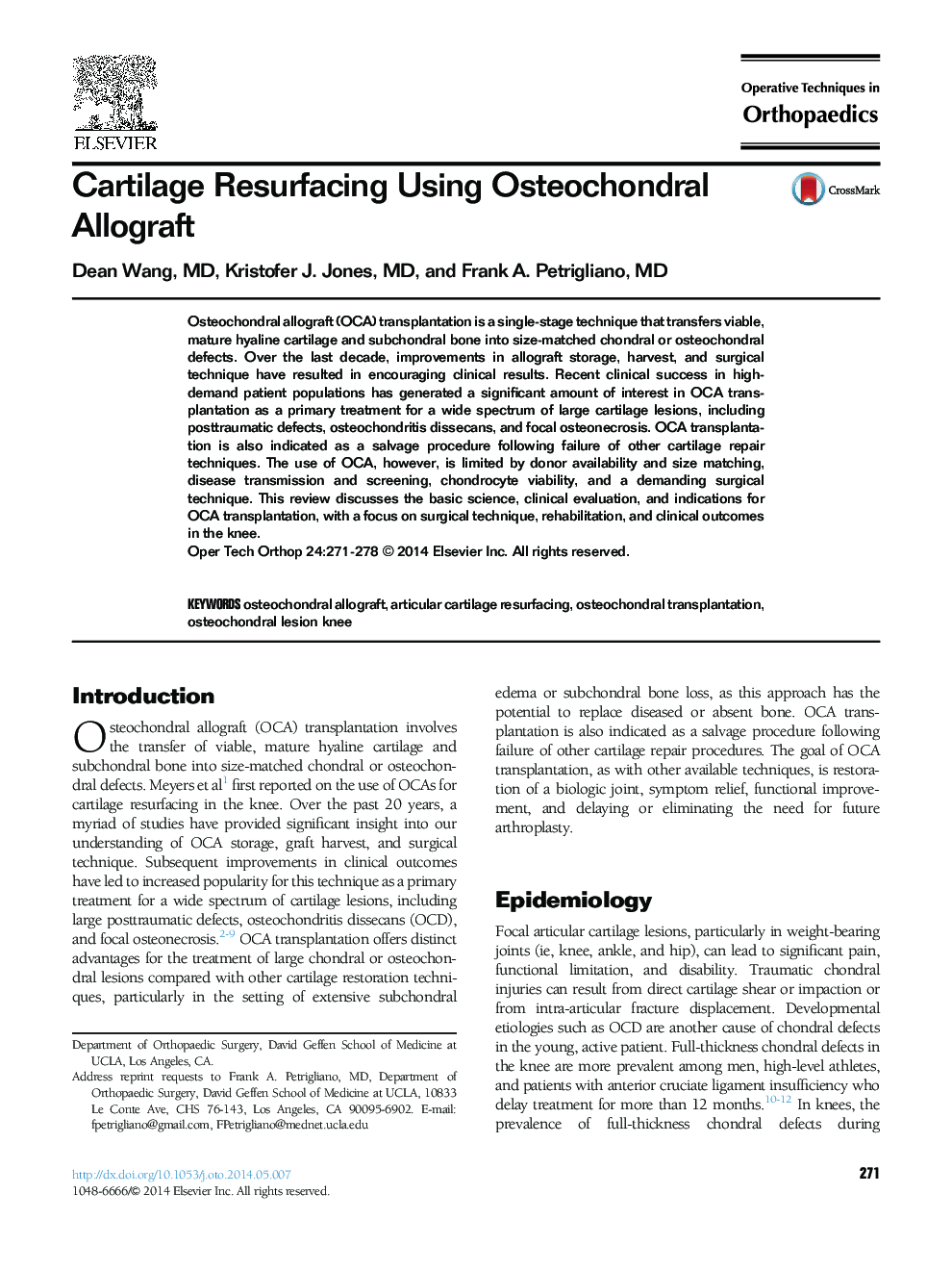| کد مقاله | کد نشریه | سال انتشار | مقاله انگلیسی | نسخه تمام متن |
|---|---|---|---|---|
| 4078835 | 1267329 | 2014 | 8 صفحه PDF | دانلود رایگان |
Osteochondral allograft (OCA) transplantation is a single-stage technique that transfers viable, mature hyaline cartilage and subchondral bone into size-matched chondral or osteochondral defects. Over the last decade, improvements in allograft storage, harvest, and surgical technique have resulted in encouraging clinical results. Recent clinical success in high-demand patient populations has generated a significant amount of interest in OCA transplantation as a primary treatment for a wide spectrum of large cartilage lesions, including posttraumatic defects, osteochondritis dissecans, and focal osteonecrosis. OCA transplantation is also indicated as a salvage procedure following failure of other cartilage repair techniques. The use of OCA, however, is limited by donor availability and size matching, disease transmission and screening, chondrocyte viability, and a demanding surgical technique. This review discusses the basic science, clinical evaluation, and indications for OCA transplantation, with a focus on surgical technique, rehabilitation, and clinical outcomes in the knee.
Journal: Operative Techniques in Orthopaedics - Volume 24, Issue 4, December 2014, Pages 271–278
